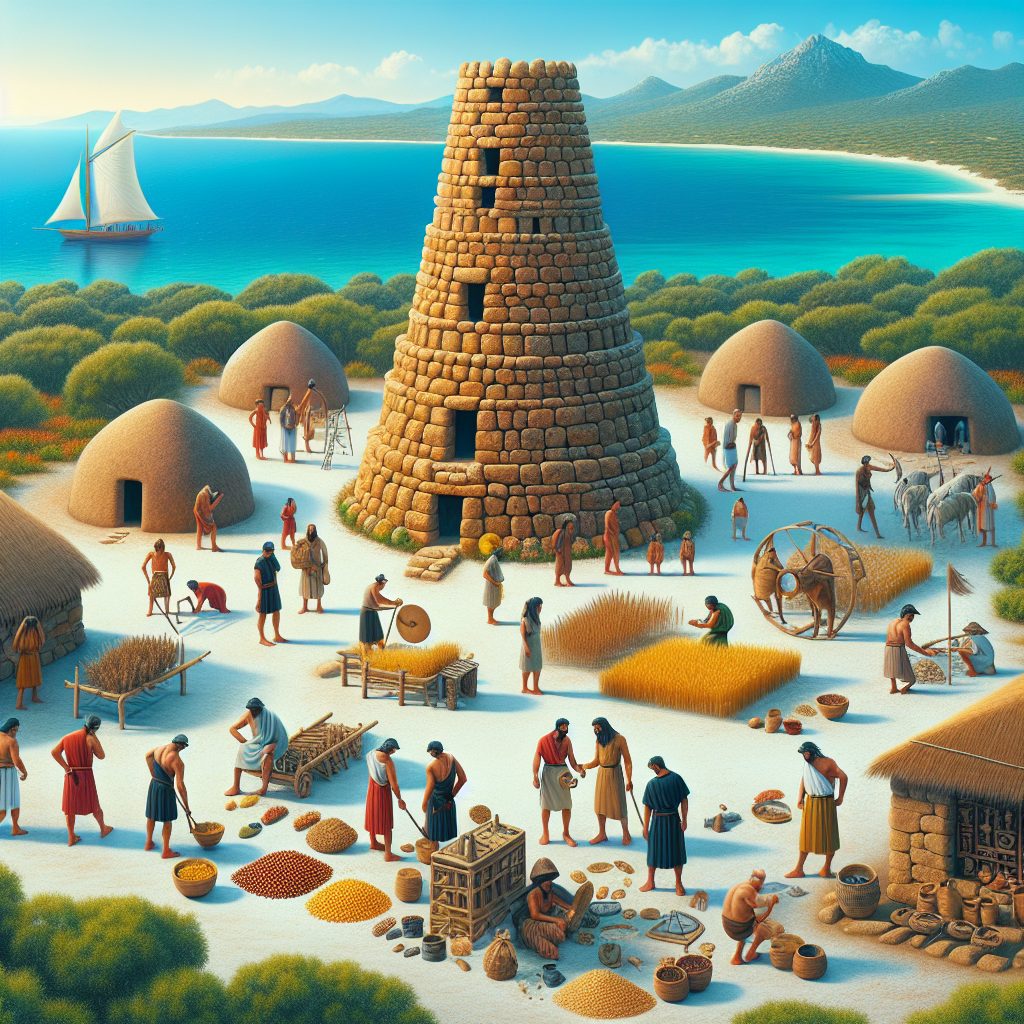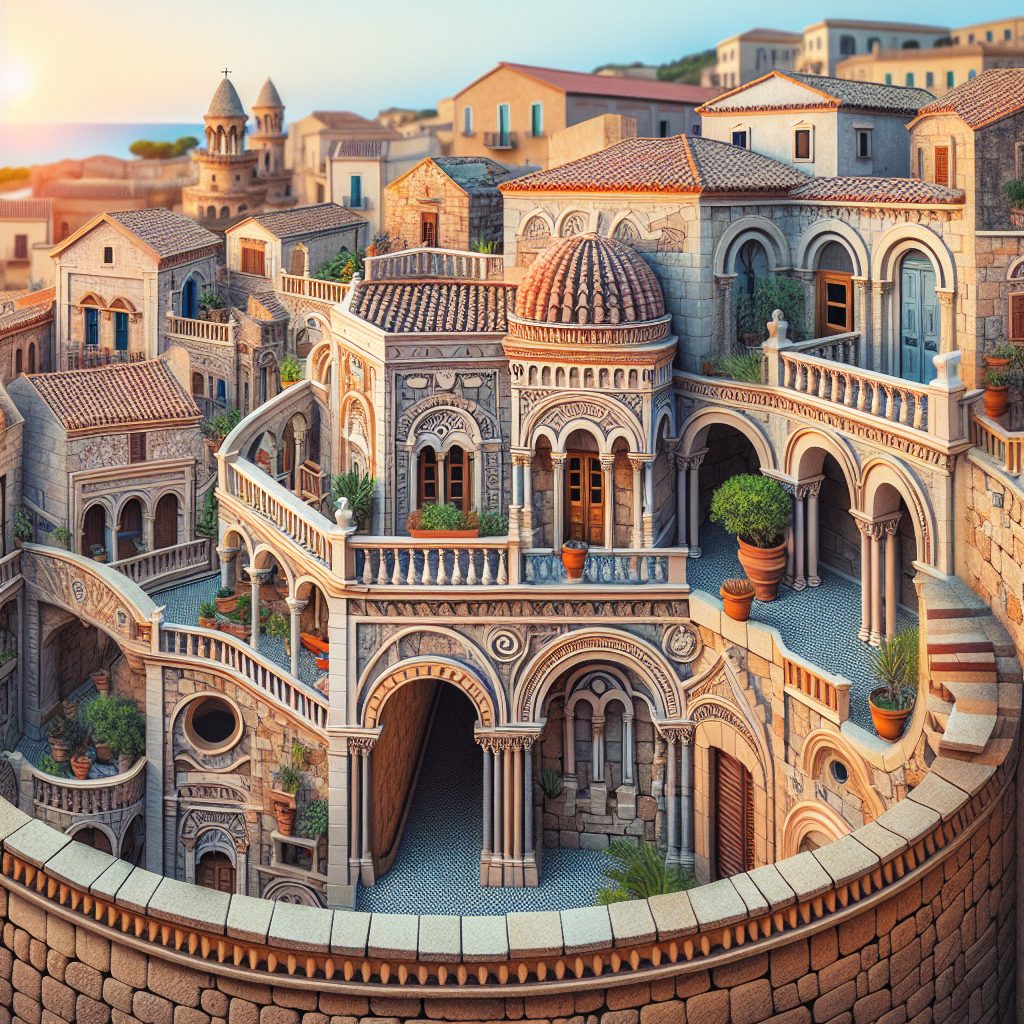Nuraghe rituals and ceremonies are an intriguing aspect of the ancient Nuragic civilization, which flourished in Sardinia, Italy, during the Bronze Age. The term “Nuraghe” refers to the characteristic tower-like structures that are the hallmark of this civilization. These impressive stone towers served as both defensive structures and religious centers, where the Nuragic people engaged in various religious rituals and ceremonies.
One unique feature of Nuraghe rituals was their strong connection to the surrounding landscape. The Nuragic people believed in the power and presence of nature in their everyday lives, and their rituals often involved offerings and sacrifices to honor the local gods and spirits. These ceremonies were commonly held in sacred outdoor spaces, such as natural caves or specially designated areas near the Nuraghe structures. The Nuragic civilization’s deep connection to their environment is reflected in the archaeological findings, which include votive offerings, pottery, and tools, providing valuable insights into their religious practices.
In the upcoming sections of this article, we will explore the key takeaways related to Nuraghe rituals and ceremonies. We will delve deeper into the significance of these rituals in the Nuragic civilization, examining their role in shaping the cultural and religious identity of the ancient Sardinians. Additionally, we will shed light on the various types of rituals performed and the artifacts used during these ceremonies, offering a fascinating glimpse into the spiritual practices of this ancient civilization.
Key Takeaways
1. Nuraghe rituals and ceremonies were an integral part of the religious and social practices of the ancient Nuragic civilization in Sardinia, Italy.
2. The Nuragic people believed in a complex system of deities and spirits, and their rituals encompassed offerings, sacrifices, and divination practices.
3. Nuraghe structures, such as the iconic towers, served as central locations for gatherings, ceremonies, and religious activities.
4. The rituals were closely tied to agriculture, fertility, and protection, aiming to ensure the well-being of the community and harmony with the natural and supernatural worlds.
5. Despite the limited amount of written records, archaeological findings such as artifacts, depictions on ceramics, and votive offerings provide valuable insights into the Nuragic rituals and their significance.
What are the Significance and Practices of Nuraghe Rituals and Ceremonies?
1. Introduction to Nuraghe Rituals and Ceremonies
Nuraghe Rituals and Ceremonies are ancient traditions that were practiced in the Nuragic civilization of ancient Sardinia. These rituals and ceremonies were an integral part of the religious and social life of the Nuragic people, offering insights into their beliefs, customs, and culture.
2. Purpose and Significance
The rituals and ceremonies held at the Nuraghe structures served various purposes in the Nuragic society. They were often conducted to honor deities, seek protection, celebrate important events, and ensure fertility for the land and its inhabitants. These practices played a crucial role in maintaining the spiritual and social harmony of the community.
3. Rituals Associated with Nuraghe
Nuraghe structures, characterized by their impressive stone towers, served as the focal point for many rituals. These ceremonies involved chanting, dancing, offerings, and sometimes animal sacrifices. The rituals were conducted by priests or priestesses, who held significant positions within the society.
4. Ceremonial Practices
Nuraghe ceremonies encompassed a wide range of practices, each with its own unique significance. Some common ceremonial practices included purifications, divination, blessings, feasting, and communal gatherings. The ceremonies were often held during specific times of the year, such as the harvest season or solstices.
5. Symbolism and Ritual Objects
Nuraghe rituals and ceremonies were filled with symbolism, with each element carrying a deeper meaning. Various ritual objects were used, such as figurines, sacred stones, pottery, and offerings of food and drink. These objects symbolized the connection between the spiritual and earthly realms, reinforcing the belief system of the Nuragic civilization.
6. Community Participation and Beliefs
Nuraghe rituals and ceremonies were not limited to the priesthood but involved active participation by the entire community. The rituals fostered a sense of unity and collective identity among the Nuragic people. They believed in the existence of multiple deities and spirits, and these ceremonies were performed to seek their favor, protection, or guidance.
7. Preservation and Modern Interpretations
Over time, the Nuragic civilization declined, and their rituals and ceremonies faded into history. However, with archaeological discoveries and research, efforts have been made to reconstruct and interpret these practices. Today, Nuraghe rituals and ceremonies are studied to understand the cultural heritage of ancient Sardinia and its impact on subsequent civilizations.
Guides for Exploring Nuraghe Rituals and Ceremonies:
- How to visit Nuraghe sites and learn about their rituals?
- What are the key artifacts associated with Nuraghe ceremonies?
- How to understand the symbolism behind Nuraghe rituals?
- What role did Nuraghe ceremonies play in the social structure of the Nuragic civilization?
- Are there any modern practices inspired by Nuraghe rituals?
Frequently Asked Questions
What are Nuraghe Rituals and Ceremonies?
Nuraghe rituals and ceremonies are ancient practices that were conducted by the Nuragic civilization of Sardinia thousands of years ago. These rituals were closely tied to the religious beliefs and social structures of the Nuragic people.
What was the purpose of Nuraghe Rituals and Ceremonies?
The purpose of Nuraghe rituals and ceremonies varied depending on the specific rite or event. Some ceremonies were performed to honor and communicate with deities, seeking their blessings for a good harvest, protection from evil, or guidance in daily life. Others were centered around important life events such as birth, marriage, or death.
Where were Nuraghe Rituals and Ceremonies performed?
Nuraghe rituals and ceremonies were commonly conducted at Nuraghe structures, which were stone towers and fortresses built by the Nuragic civilization. These structures served as religious, social, and administrative centers, making them ideal locations for communal rituals.
Were Nuraghe Rituals and Ceremonies secretive?
While some aspects of Nuraghe rituals and ceremonies may have been secretive, much of the information we have today comes from archaeological discoveries and historical documentation. These practices were an important part of Nuragic culture and were likely shared within the community.
What artifacts have been found related to Nuraghe Rituals and Ceremonies?
Archaeological excavations at Nuraghe sites have uncovered various artifacts related to rituals and ceremonies. These include statues representing deities, ritual objects such as ceremonial vessels and offerings, and inscriptions that provide insights into religious practices.
Did Nuraghe Rituals and Ceremonies involve sacrifices?
There is evidence to suggest that some Nuraghe rituals and ceremonies involved animal sacrifices. Animal bones have been found at certain Nuraghe sites, indicating the possible presence of sacrificial rites. However, our knowledge of the specifics and frequency of such practices is limited.
How were Nuraghe Rituals and Ceremonies influenced by nature?
Nuraghe rituals and ceremonies were closely connected to nature, as the Nuragic civilization had a deep appreciation for the environment. They believed in the sacredness of natural elements such as water, trees, and animals, and incorporated these elements into their ceremonies to establish a harmonious relationship with the natural world.
Are Nuraghe Rituals and Ceremonies still practiced today?
No, Nuraghe rituals and ceremonies are not actively practiced today. They are considered ancient practices that were specific to the Nuragic civilization, which disappeared many centuries ago. However, their cultural and historical significance has led to a renewed interest in studying and understanding them.
Can visitors experience Nuraghe Rituals and Ceremonies when visiting Sardinia?
While visitors to Sardinia cannot directly experience Nuraghe rituals and ceremonies that occurred thousands of years ago, they can explore and learn about the Nuragic civilization by visiting archaeological sites, museums, and participating in cultural events that showcase the rich heritage of the region.
What can we learn from Nuraghe Rituals and Ceremonies?
Studying Nuraghe rituals and ceremonies provides valuable insights into the beliefs, social structures, and daily life of the Nuragic civilization. It offers a window into the spiritual and cultural practices of an ancient society, allowing us to better understand and appreciate the diversity of human history.
Final Thoughts on Nuraghe Rituals and Ceremonies
The rituals and ceremonies of the Nuragic civilization provide a fascinating glimpse into the ancient past of Sardinia. They reveal the deep spiritual connection the Nuragic people had with their environment and the importance they placed on community and religious beliefs. Exploring these rituals allows us to appreciate the rich heritage of the island and the complexity of human cultural practices throughout history.
While we may not fully comprehend the intricacies of Nuraghe rituals and ceremonies, their existence serves as a reminder of the diversity and depth of human cultural expression. The study of these ancient practices continues to unveil new discoveries and shed light on the lives of our predecessors, offering a profound appreciation for the ingenuity and creativity of ancient civilizations.






